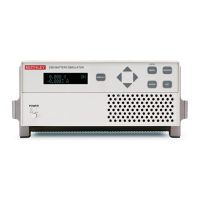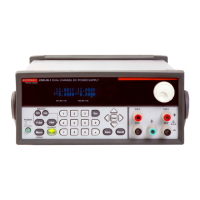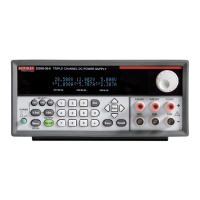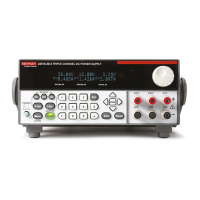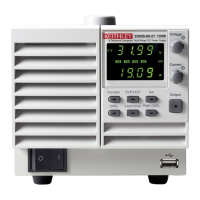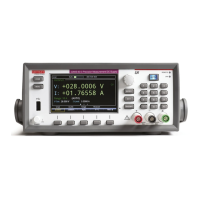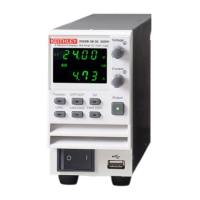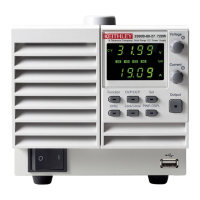Signal Oriented Measurement Commands 9-3
NOTES 1. A FETCh? reading can be returned in exponent form (i.e. 10V returned as
+1.00000000E+01) or as a decimal reading (i.e. 10V returned as 10.0000,
10.000 or 10.00). The reading format is selected from the GPIB MENU, OUTPUT
FORMAT item of the menu (see “Output Format” in Section 6 for details).
2. FETCh:ARRay? readings are always sent in exponent form.
3. There are no AVERage commands for long integration measurements. The array
size for long integration readings is fixed at one. Therefore, both FETCh? and
FETCh:ARRay? will return the last reading.
:READ? Trigger and return reading
:READ:ARRay?
Trigger and return array of readings
The :READ? command is used to trigger and return a single averaged reading, and the
:READ:ARRay? command is used to trigger and return an array of readings. The averaged read-
ing or reading array is sent to the computer when the power supply is addressed to talk. The aver-
aged reading is displayed on the front panel. The front panel does not show an array of readings,
only the average of an array.
The number of readings to average or put in an array is set using the :SENSe:AVERage (for
voltage, current and DVM readings) or :SENSe:PCURrent:AVERage (for pulse-current read-
ings) command. See Sections 2 and 3 for details.
NOTES 1. A READ? reading can be returned in exponent form (i.e. 10V returned as
+1.00000000E+01) or as a decimal reading (i.e. 10V returned as 10.0000,
10.000 or 10.00). The reading format is selected from the GPIB MENU, OUTPUT
FORMAT item of the menu (see “Output Format” in Section 6 for details).
2. READ:ARRay? readings are always sent in exponent form.
3. There are no AVERage commands for long integration measurements. The array
size for long integration readings is fixed at one. Therefore, both READ? and
READ:ARRay? will return a single long integration reading.
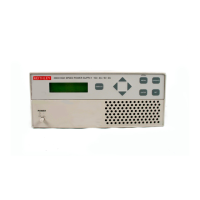
